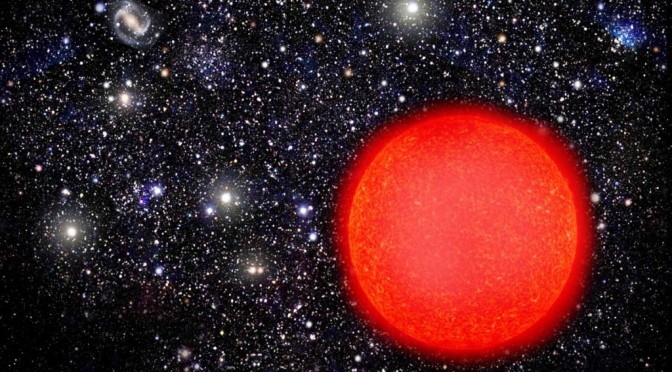This is the third installment in our “Ask A Science Student” series. For the previous responses, see chemistry and physics.
Ask a Science Student, Part 3: Astronomy
By Marcus Hughes ’18
Astronomy deals with a tremendous scale of energy, from the Cosmic Microwave Background – the 2.7 kelvin echo left from the Big Bang – to hyper-luminous quasars – compact centers of galaxies related to black holes that release 4 trillion times as much energy as our Sun. Astronomy even has not yet understood types of energy like dark energy, a repulsive energy causing the universe to expand faster, literally changing the fate of the universe. When most people think of energy in astronomy, they think of stars, but dark energy makes up 70% of the total mass-energy in the universe. At its simplest, energy is just the capacity to do work; i.e. the capacity for a force to displace an object.
For example, 13.6 billion years ago the Big Bang released tremendous amounts of energy, causing the universe to begin expanding in all directions. About 4.6 billion years ago, our sun formed from clouds of hydrogen cooling and coalescing. When the cloud reached a high enough density, hydrogen fusion began. By combining hydrogen atoms to form helium, excess energy was and still is released to prevent the exterior parts of the sun from collapsing in on the center due to its own gravity.
This continuous struggle of collapse versus fusion defines most of the star’s lifecyle during what astronomers call the main sequence. Eventually, the sun won’t be able to release enough energy through hydrogen fusion and will begin collapsing. After more energy exchanges, the sun will expand to several times its original size, becoming a red giant. Finally, the sun will lose its outer layers to form a planetary nebula, leaving a hot burning center to eventually cool off billions of years into the future. This is just one example of the many energy exchanges in astronomy.
Image source: http://irfu.cea.fr/en/Phocea/Vie_des_labos/Ast/ast.php?id_ast=2996
